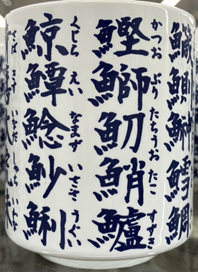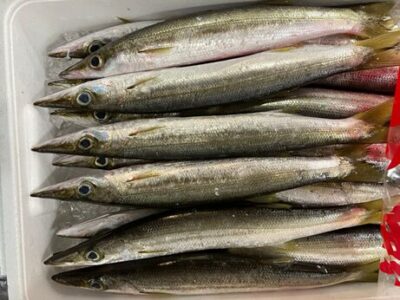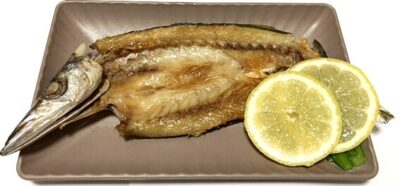2024.03.21
鮮魚情報
Are you aware of 「魳(KAMASU)」?
When you are in a sushi restaurant, maybe you see many Kanji printed on the teacup and
there are many Kanji you will not be able to read. Today, we would like to pick up '魳(KAMASU, Barracuda)' from these difficult-to-read kanji and introduce it to you.
There are various theories as to the origin of its name, such as that its large mouth resembles a straw bag called KAMASU, or that its ferocious character led to it being named "barracuda"(魳) after the right side of the word "battle" (師).
Barracudas are widely distributed in the Japanese Island and mainly caught in Kagoshima and Kanagawa prefectures. Our company often offers Barracuda which was caught in Nagasaki for overseas markets.
Barracudas-around 250g per piece
Barracudas, with their long, thin faces and beautiful bodies, have two seasons in a year, so they are sometimes called 'rainy season barracuda (tsuyu kamasu)' in March to April, when they store up nutrients in preparation for spawning, and 'autumn barracuda (aki kamasu) ' in October to December, when they become fatty.
It looks like saury, barracuda is a white-fleshed fish, a relative of sea bass. Its light flavor and savory fat are beloved, and barracuda appears in a variety of dishes, with grilled and dried one being particularly popular. If you want to enjoy the original texture of barracuda, Skin grilled sashimi (Yaki shimo tsukuri) is recommended. Grill the skin, cool it in cold water, then drip with ponzu (Japanese citrus juice) or soy sauce to taste. The aroma and flavor of the skin makes this dish irresistible.
In the coming season, when the petals of cherry blossoms are dancing with the wind, how about enjoying the taste of barracuda?






